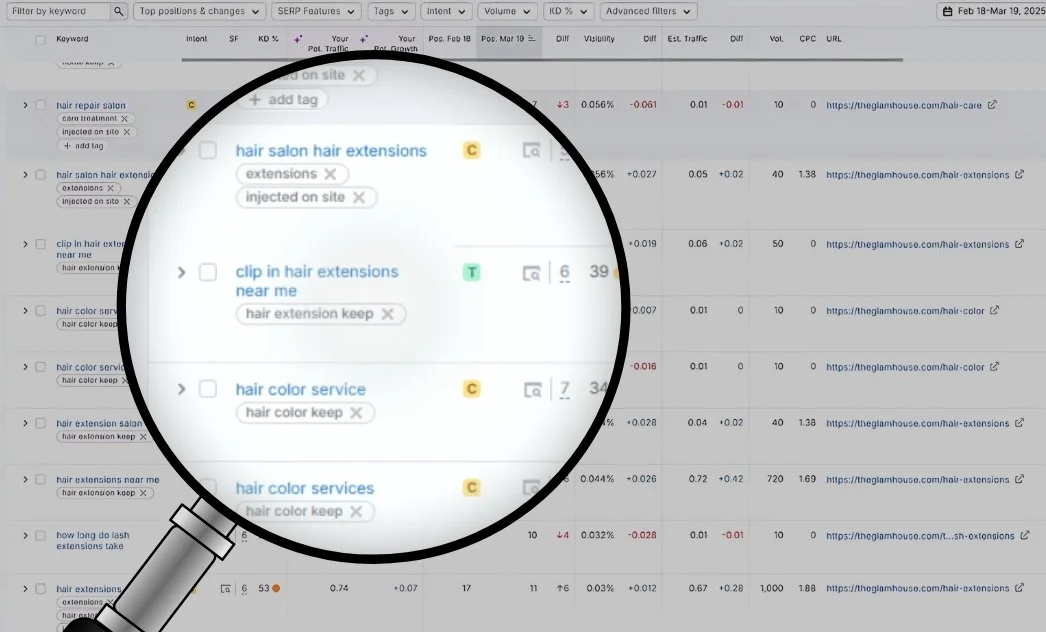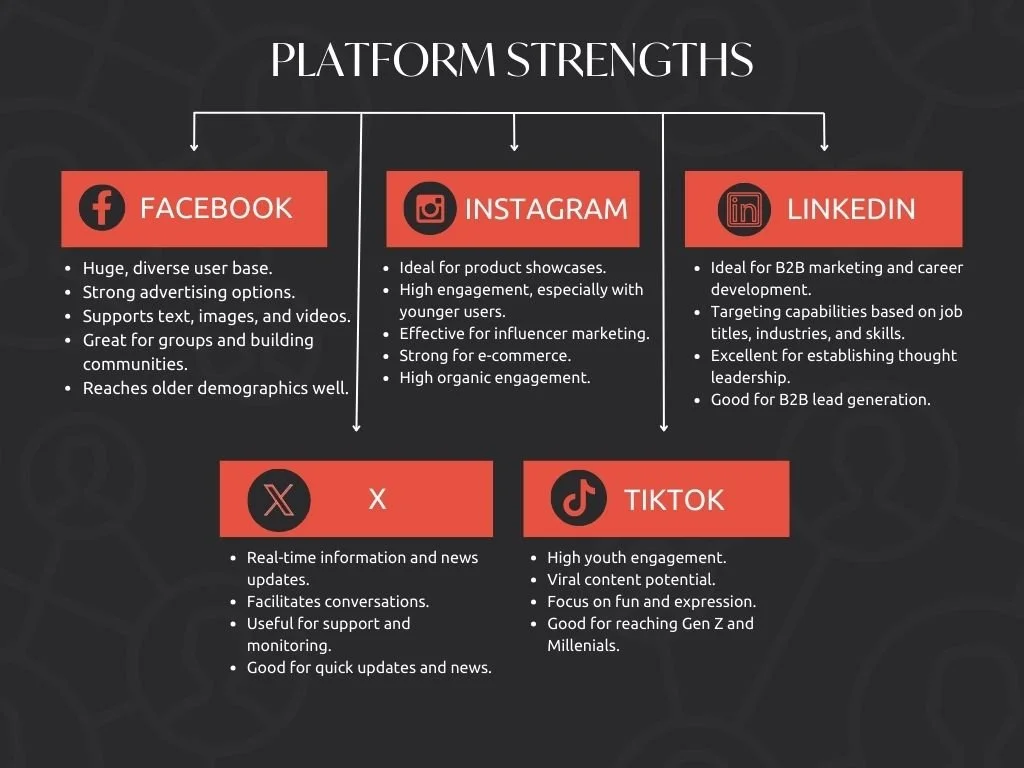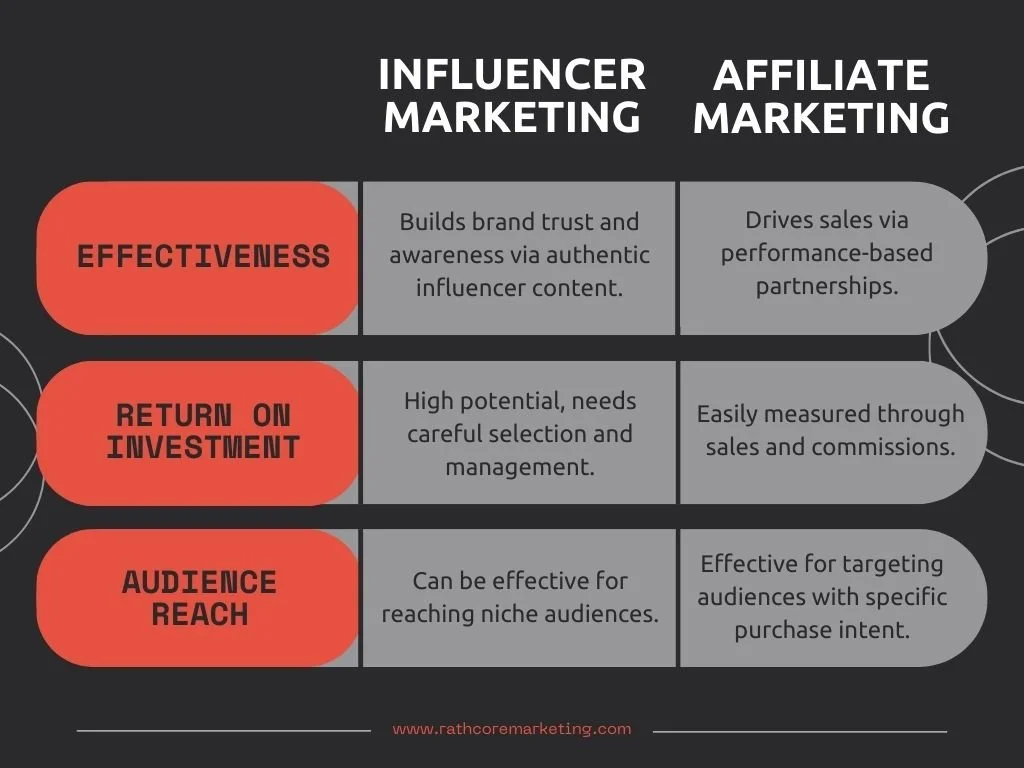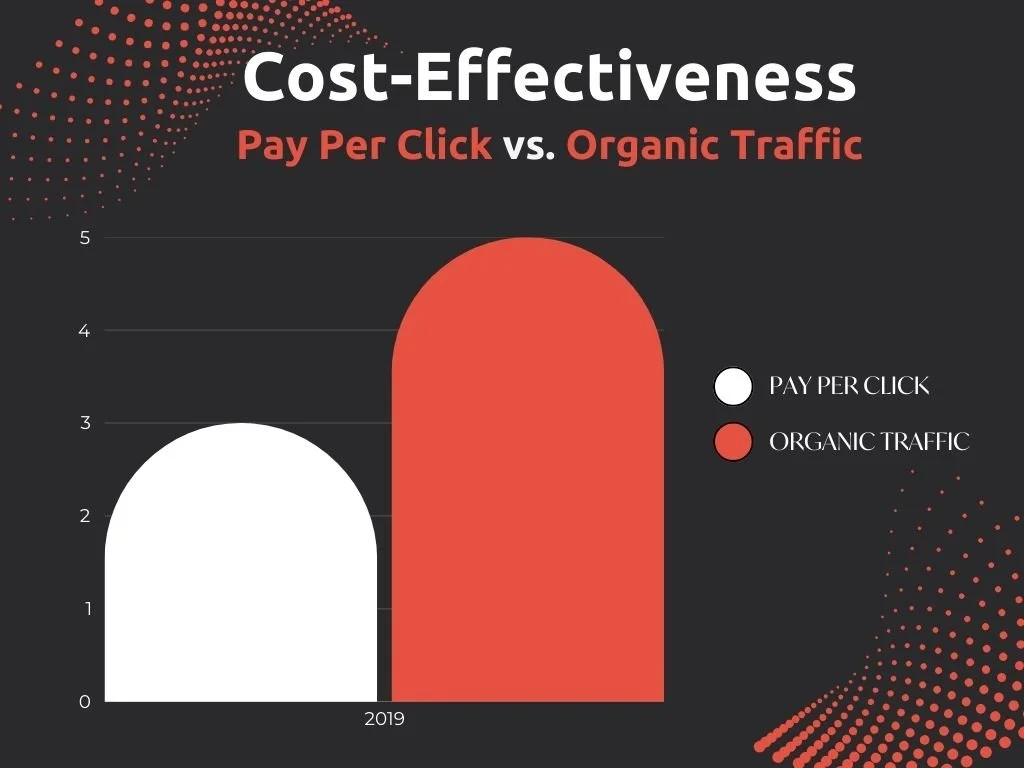What Digital Marketing Strategies Are the Most Effective?
Digital marketing strategies are a lot like gym memberships. Everybody swears they have one, but most aren’t using it right—and the results speak for themselves.
Let’s not sugarcoat it: If having a strategy was enough, every business pouring money into Facebook ads and "optimizing for SEO" would be raking in cash. But they’re not. Because most businesses are running marketing strategies that were outdated before they even hit "publish."
Look, some brands are printing money without ever touching paid ads, while others are spending six figures for engagement that doesn’t convert. One company tweaks a subject line and boosts revenue by 300%. Another clings to "more traffic means more sales"—and gets neither.
So what’s the real difference between strategies that build empires and those that silently drain budgets?
It’s not more content, more ads, or more automation. It’s understanding what actually makes people buy. And that’s exactly what we’re about to break down.
Search Engine Optimization (SEO) Best Practices
Search Engine Optimization (SEO) has been declared dead more times than disco. Yet, here we are, still talking about it. The truth is, SEO remains a cornerstone of any effective digital marketing strategy. But the game has changed, and clinging to outdated tactics is like trying to sell VHS tapes in a Netflix era.
On-Page vs. Off-Page SEO
Understanding the distinction between on-page and off-page SEO is crucial. On-page SEO is like grooming your front yard—it's all about what you control directly on your website. This includes optimizing title tags, meta descriptions, and ensuring your content is as engaging as a cliffhanger in a binge-worthy series. Off-page SEO, on the other hand, is influenced by external factors such as backlinks and social signals.
The Role of Keywords
Gone are the days when cramming your content with keywords could catapult you to the top of search results. Modern SEO demands a more sophisticated approach. It's about understanding user intent and incorporating keywords naturally. For instance, if you're offering content marketing services, your content should address the specific needs and pain points of your target audience, seamlessly integrating relevant keywords.
Backlinks: Quality over Quantity
Backlinks remain a vital component of SEO. However, it's not about amassing links from any site willing to give you a nod. Search engines have wised up. They now prioritize the quality and relevance of backlinks over sheer numbers. A single link from an authoritative site in your industry can be more valuable than dozens from low-quality sources.
Technical SEO
Technical SEO is the backbone of your website's performance. It involves optimizing elements like site speed, mobile-friendliness, and secure connections (HTTPS). These factors not only enhance user experience but also signal to search engines that your site is trustworthy and worth ranking higher.
The Rise of Artificial Intelligence in SEO
Artificial intelligence (AI) is reshaping the SEO landscape. Search engines are leveraging AI to better understand user queries and deliver more relevant results. For marketers, this means adapting strategies to align with AI-driven algorithms, focusing on creating high-quality, user-centric content.
Voice Search Optimization: Speaking the Language of the Future
With the proliferation of voice-activated devices, optimizing for voice search has become imperative. This involves focusing on natural language keywords and providing concise, informative answers to common questions. As users increasingly rely on voice search, adapting your SEO strategy accordingly can give you a competitive edge.
Content Marketing and Social Media Marketing
Content Marketing: The Art of Not Being Boring
Content marketing is more than just churning out blog posts and hoping someone reads them. It's about creating valuable, relevant content that resonates with your audience and establishes your brand as an authority. In a digital landscape saturated with information, standing out requires creativity and a deep understanding of your audience's needs.
The Benefits of Content Marketing Services
Investing in professional content marketing services can elevate your brand's presence. These services offer expertise in crafting content that not only engages but also converts. They can help in developing a cohesive strategy that aligns with your business goals, ensuring that every piece of content serves a purpose.
Social Media Marketing
Social media marketing is not about chasing the latest viral trend. It's about building genuine connections with your audience and fostering a community around your brand. This involves understanding the nuances of each platform and tailoring your content accordingly.
How Social Media Drives Brand Awareness
Social media platforms are powerful tools for increasing brand awareness. They provide opportunities to showcase your brand's personality, share customer testimonials, and engage directly with your audience. Consistent, authentic engagement can turn followers into loyal customers.
Choosing the Right Platforms for Your Business Goals
Not all social media platforms are the same. Each has its own demographic and style. For instance, LinkedIn is ideal for B2B marketing, while Instagram and TikTok cater to younger, more visually-oriented audiences. Aligning your platform choice with your business goals ensures that your efforts are directed where they'll have the most impact.
The Synergy between Content and Social Media Marketing
Content marketing and social media marketing are not isolated strategies. They complement each other. High-quality content provides material to share on social platforms, while social media amplifies your content's reach. This synergy enhances engagement and drives traffic to your site.
Both content and social media marketing require ongoing analysis. Utilizing analytics tools helps track the effectiveness of your campaigns. This data-driven approach allows for continuous improvement and adaptation to changing trends and audience preferences.
Influencer and Affiliate Marketing Strategies
Influencer marketing has skyrocketed, transforming from a niche tactic to a $24 billion industry in 2024. By 2025, it's projected to reach approximately $33 billion. But does this meteoric rise translate to effectiveness, or are we all just drinking the Kool-Aid?
The Meteoric Rise and Effectiveness of Influencer Marketing
In 2025, a staggering 86% of U.S. marketers are expected to collaborate with influencers, up from 70% in 2021. This isn't just a herd mentality; there's substance behind the surge. For every dollar shelled out on influencer campaigns, brands are raking in an average of $6.50. That's a return even your stingiest uncle would approve of.
However, it's not all sunshine and rainbows. Up to 45% of affiliate traffic is fraudulent, highlighting the need for robust fraud detection. And let's not forget the 18% of businesses that see zilch from their influencer investments. So, choose your influencers wisely, or risk throwing your marketing dollars into the void.
Affiliate Marketing: Generating Passive Leads or Just Passive-Aggressive?
Affiliate marketing isn't the new kid on the block, but it's certainly had a glow-up. The industry is valued at over $17 billion as of 2025. But does it deliver on its promise of passive leads, or is it just another buzzword-laden pipe dream?
The Mechanics of Affiliate Marketing Programs
At its core, affiliate marketing is a commission-based arrangement where affiliates promote a company's products, earning a cut from each sale made through their referral links. It's like having a legion of salespeople who only get paid when they deliver—capitalism at its finest.
The Efficacy of Affiliate Marketing
Approximately 81% of brands and 84% of publishers leverage affiliate marketing, underscoring its widespread adoption. Moreover, affiliate marketing contributes to 16% of all e-commerce sales in the U.S., showcasing its significant impact. However, it's worth noting that up to 45% of affiliate traffic is fraudulent, highlighting the need for robust fraud detection measures.
Choosing the Right Partnerships for Brand Growth
Not all that glitters is gold, and not every influencer or affiliate will propel your brand to stardom. Selecting the right partners is akin to dating—you want someone who complements your brand, shares your values, and doesn't embarrass you at family gatherings.
Key Considerations:
Alignment with Brand Values: An influencer known for their edgy humor might not be the best fit for a family-oriented product.
Engagement Over Follower Count: A micro-influencer with a 10% engagement rate can be more valuable than a celebrity with millions of passive followers.
Authenticity: Audiences can sniff out inauthenticity like a bloodhound. Ensure your partners genuinely believe in your product.
In essence, both influencer and affiliate marketing can be powerful tools in your arsenal, but only if wielded with precision, authenticity, and a discerning eye.
Paid Advertising and Marketing Automation
Paid advertising often gets a bad rap, dismissed as the annoying pop-up of the marketing world. Yet, when executed strategically, it can be a game-changer in your digital marketing strategy.
The Effectiveness of Pay-Per-Click Advertising (PPC) in Digital Strategy
Pay-per-click (PPC) advertising is a model where advertisers pay a fee each time their ad is clicked. It's essentially buying visits to your site rather than earning them organically.
Why PPC Works:
Immediate Visibility: Unlike SEO, which can take months to show results, PPC offers instant exposure.
Targeted Reach: PPC allows you to target specific demographics, locations, and even times of day, ensuring your ads reach the most relevant audience.
Measurable Results: With PPC, you can track every penny spent and correlate it directly to conversions, providing a clear ROI picture.
However, PPC is not a silver bullet. Without proper management, costs can spiral, and ads can underperform. It's a tool that requires skill and strategy to yield the desired results.
Marketing Automation: The Rise of the Machines
In an era where time is money, marketing automation tools have emerged as the unsung heroes, streamlining repetitive tasks and allowing marketers to focus on strategy and creativity.
Benefits of Marketing Automation Tools:
Efficiency: Automate tasks like email campaigns, social media posting, and ad management, freeing up valuable time.
Personalization: Deliver personalized content at scale, enhancing user experience and engagement.
Data-Driven Decisions: Access to analytics and performance metrics enables informed decision-making and continuous optimization.
However, automation is not a set-it-and-forget-it solution. It requires continuous monitoring and tweaking to ensure campaigns remain effective and relevant.
The Role of Email Marketing Campaigns for Start-Ups in Customer Retention
Email marketing isn't dead. In fact, it's far from it. If anything, it's the highest ROI digital marketing strategy in existence—generating an estimated $42 for every $1 spent. Yet, many start-ups treat it like an afterthought, shoving a poorly written newsletter into inboxes and wondering why their open rates resemble a ghost town.
Here’s the reality: Customers need at least 6 to 8 touchpoints before they trust a brand enough to buy. And while social media and PPC ads can generate traffic, neither provides the personal, one-to-one connection that email does.
Why Email Marketing is the Ultimate Retention Strategy for Startups
Direct Line to Customers: You own your email list. Unlike social media, where an algorithm dictates who sees your posts, email lands directly in a subscriber’s inbox.
Higher Engagement than Social Media: The average email open rate is around 20%, while the average organic reach on Facebook is 2%.
Automated Yet Personalized: With marketing automation tools, startups can send hyper-personalized sequences based on user behavior.
However, bad email marketing is worse than no email marketing. If you’re blasting generic sales emails, expect a one-way ticket to the spam folder. Instead, successful email campaigns focus on three core elements:
Welcome Sequences That Don’t Suck – Your first email is not the time to hard-sell. Instead, set expectations and provide immediate value.
Behavior-Based Sequences – Someone abandoned their cart? Trigger an email with a limited-time incentive.
Re-Engagement Campaigns – Customers ghosting you? A well-crafted “We Miss You” email can bring them back.
If you’re serious about long-term customer retention and lifetime value, start treating email as the digital gold mine it is.
Conclusion
If there’s one takeaway from this, it’s that there is no magic bullet in digital marketing.
SEO works, but only if executed with precision.
Content marketing builds authority, but without distribution, it’s wasted effort.
Social media marketing amplifies brand awareness, but without engagement, it’s just noise.
Influencer marketing and affiliate marketing programs can generate passive leads, but only with the right partnerships.
Pay-per-click advertising is powerful, but can burn cash fast if mismanaged.
Marketing automation tools improve efficiency, but without strategy, they’re just expensive software.
Email marketing campaigns for start-ups are unbeatable for customer retention, but only if they’re done right.
The most effective digital marketing strategy is not one single tactic—it’s a strategic combination of multiple approaches that reinforce each other. The brands that dominate in 2025 are not the ones chasing the latest marketing fad, but the ones who execute proven strategies better than anyone else.
So, here’s the real question: Which of these strategies is your business actually using to its full potential?
-
A: Search Engine Optimization (SEO) is the process of improving a website’s visibility on search engines like Google to attract organic, high-intent traffic. It involves on-page optimization, backlinks, and technical SEO to ensure search engines recognize the site as valuable and authoritative. Unlike paid ads, SEO doesn’t offer instant results but, when done right, provides long-term sustainable traffic growth and a higher return on investment than most marketing tactics.
-
A: The five core digital marketing strategies are SEO, content marketing, social media marketing, paid advertising, and email marketing. SEO ensures organic visibility, content marketing builds authority, and social media amplifies brand presence. Paid advertising, including pay-per-click, delivers immediate exposure, while email marketing remains the highest-ROI strategy for retention and engagement. A combination of these tactics creates a well-rounded, high-impact marketing strategy.
-
A: SEM stands for Search Engine Marketing, a strategy that increases a website’s visibility through paid search advertising and organic SEO efforts. Unlike SEO, which focuses on organic rankings, SEM includes pay-per-click (PPC) advertising to instantly place a business at the top of search results. It’s an effective way to generate immediate traffic, particularly for competitive industries where organic SEO alone may take longer to gain traction.
READ MORE…
What's Happening to SEO? 8 SEO Trends for 2025





